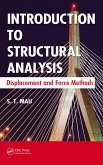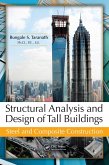The book demonstrates how displacements, taken as the primary variables, enable the formation of local element stiffness matrices in the Direct Stiffness Method. In this latter approach, individual element contributions are assembled into a system-level representation, permitting the modeling of virtually any complex structure. This direct stiffness methodology underpins the development of today's general-purpose finite element programs, offering both breadth and depth to structural analysis.
Features
- Establishes discrete structural modeling as the basis of finite element methods, which are now the industry standard for structural analysis.
- Provides a step-by-step explanation of the Force Method, the Displacement Method, and the Direct Stiffness Method for 1D members-such as beams, trusses, plane frames, grillages, and space frames-ensuring a clear and accessible learning experience.
- Highlights Berkeley's approach to representing joints by employing rigid nodes within a nodal network of interconnected 1D, 2D, or 3D deformable members.
- Offers an illustrative extension through the MAIL (Matrix Analysis Interpretive Language), which enriches analysis examples, exercises, and problems.
Targeted at senior undergraduate and graduate students in structural engineering, this book serves as an essential prerequisite for the Finite Element Analysis of Structures.
Dieser Download kann aus rechtlichen Gründen nur mit Rechnungsadresse in A, B, BG, CY, CZ, D, DK, EW, E, FIN, F, GR, HR, H, IRL, I, LT, L, LR, M, NL, PL, P, R, S, SLO, SK ausgeliefert werden.









